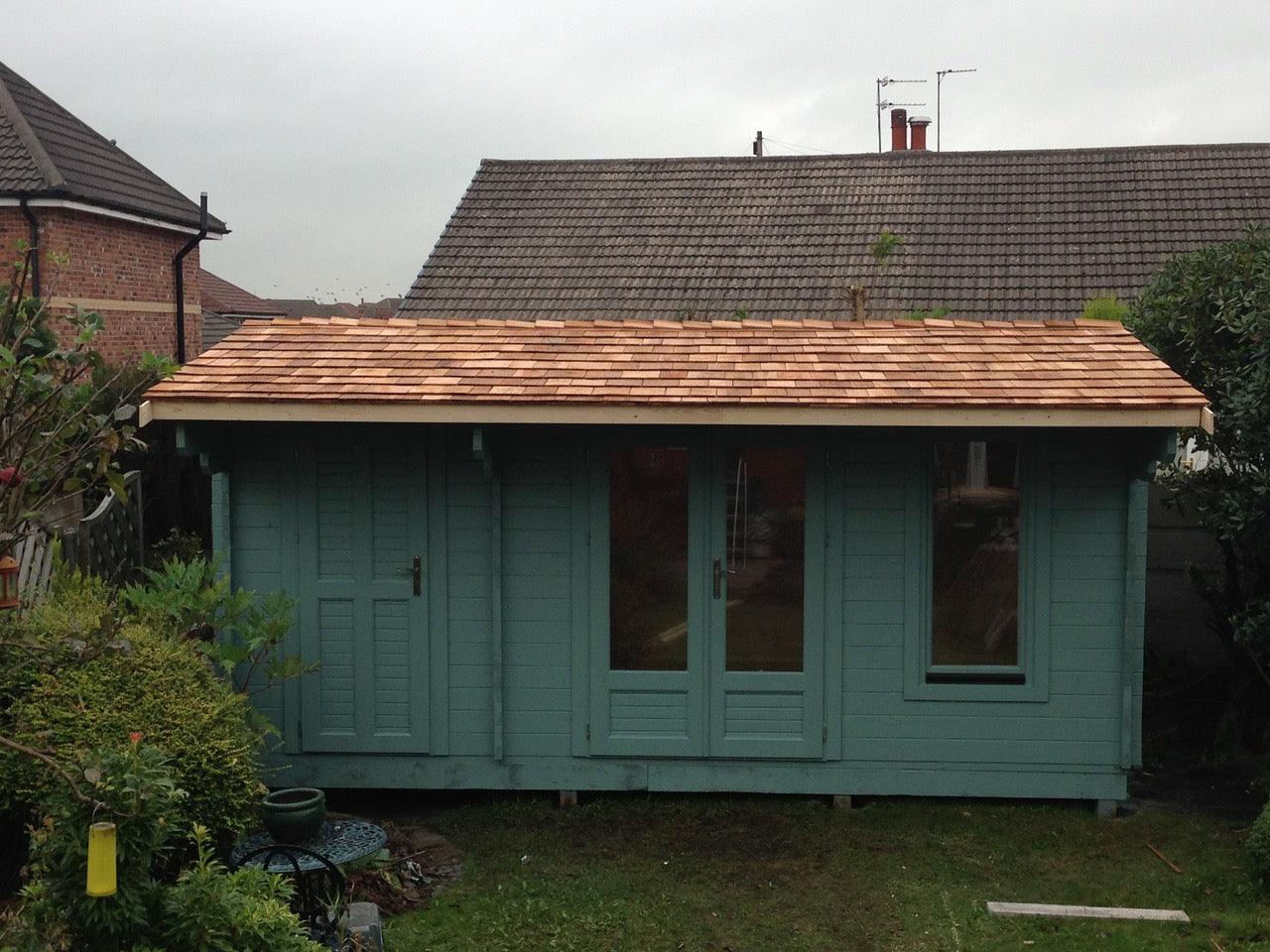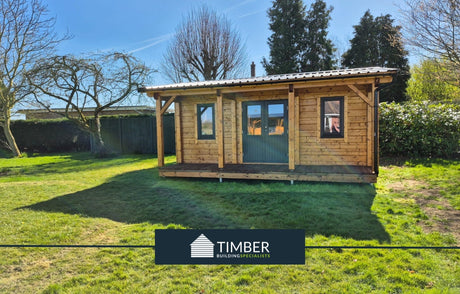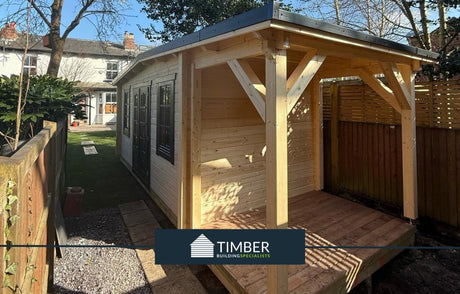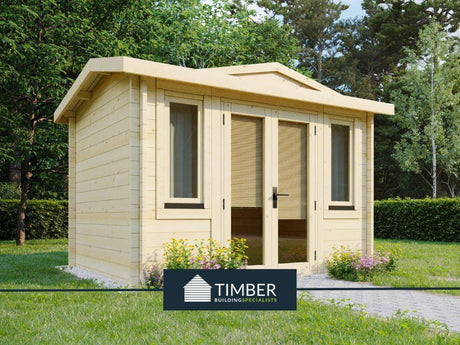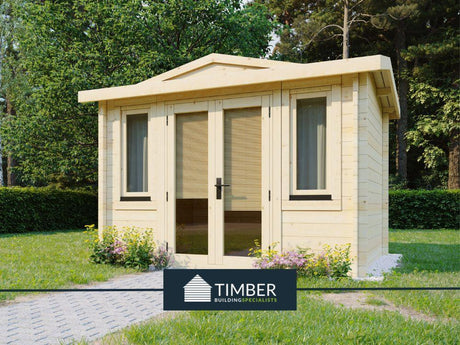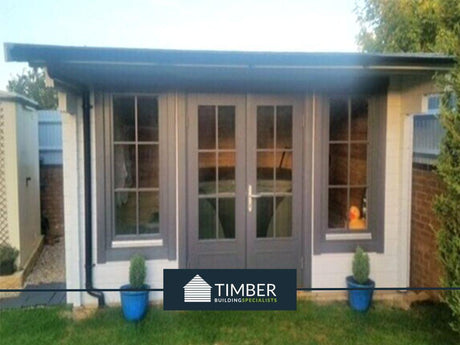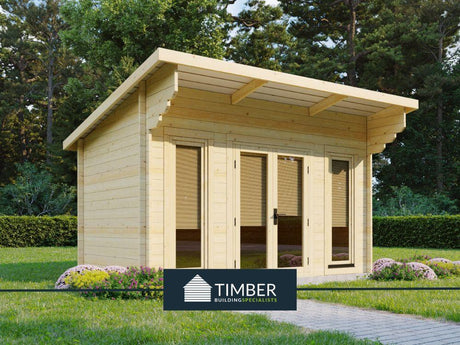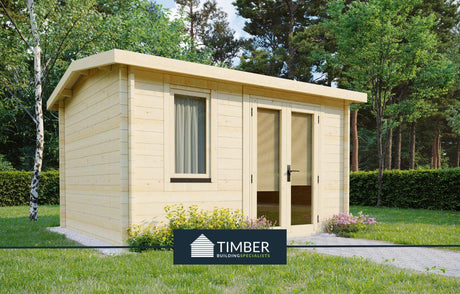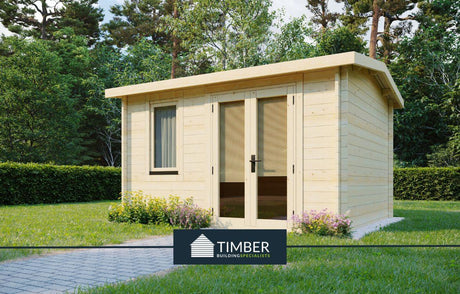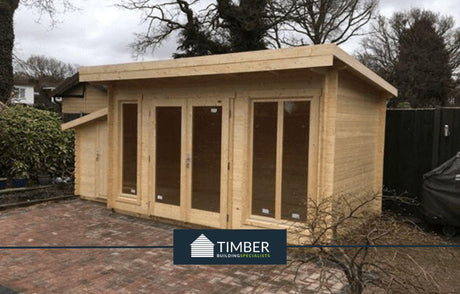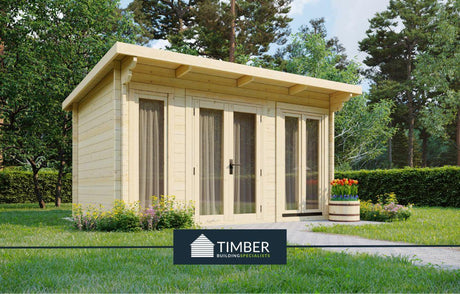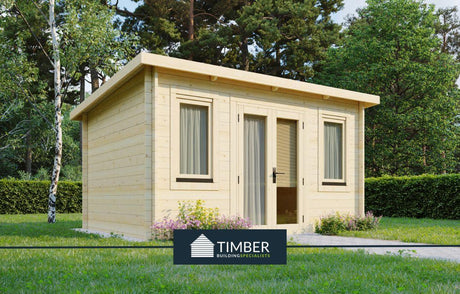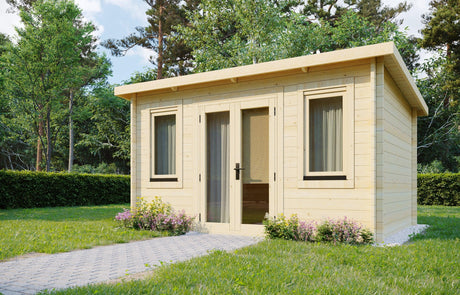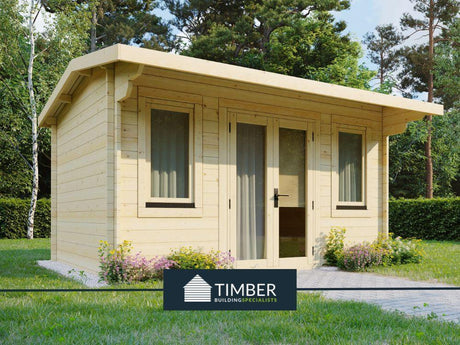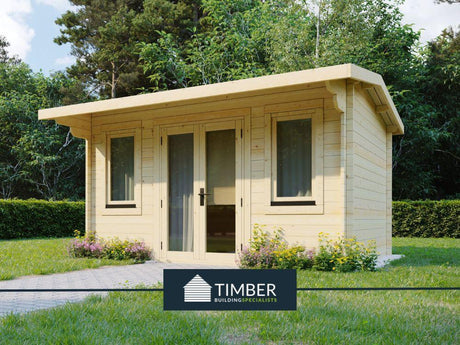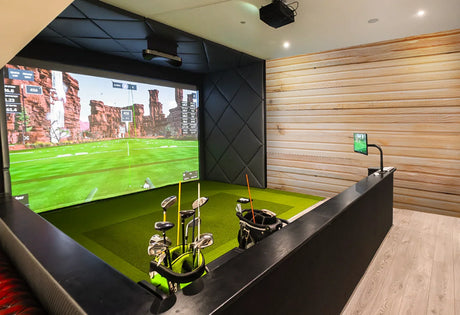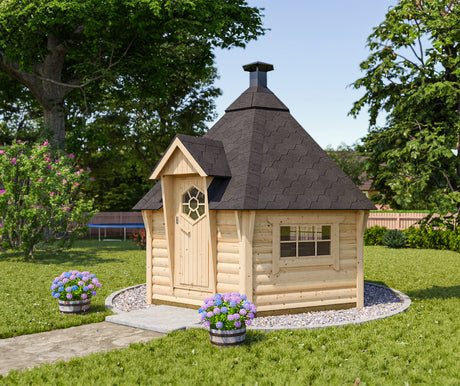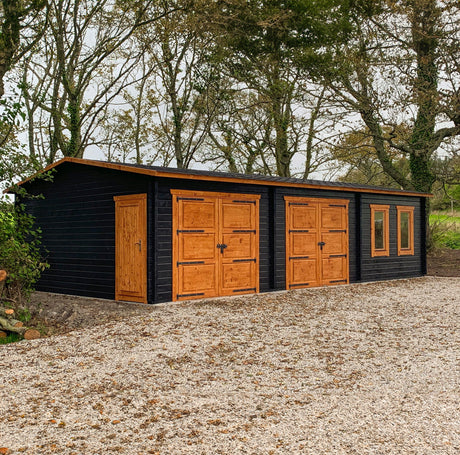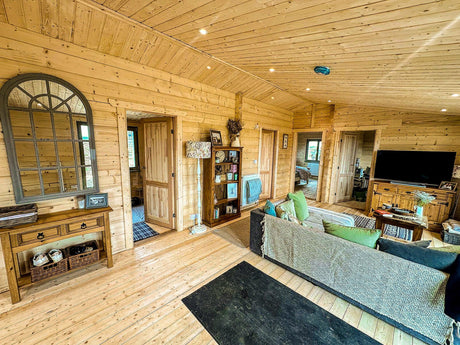Imagine stepping into your log cabin workshop, where the rustic charm sparks your creativity and the scent of timber fills the air. This serene and inspiring space, designed with large windows for natural light, provides easy access to tools and materials. It's your unique creativity refuge, blending nature with craftsmanship to encourage a flow of new ideas. Whether it's the dynamic shadows from natural light or the calming influence reducing stress, each element is chosen to inspire. With practical features and a design that reflects your creativity, this sanctuary is more than just a workspace. Discover how to make it yours.
The Charm of Log Cabin Workshops
The rustic allure of log cabin workshops captivates many, offering a serene and inspiring space for creativity and craftsmanship. Imagine stepping into your own wooden workshop, nestled in the garden, where the scent of timber fills the air. It's not just a building; it's a retreat where your creative ideas can flourish away from the distractions of daily life.
Building a log cabin workshop isn't just about having a space to work; it's about crafting an environment that resonates with your artistic soul. The natural materials, predominantly wood, harmonise with the outdoors, making you feel more connected to nature. This connection can be a powerful source of inspiration, fuelling your creativity in ways you hadn't imagined.
Opting for a garden log cabin constructed from logs isn't merely a functional choice; it's a statement of valuing authenticity and sustainability. The charm of these workshops lies in their simplicity and the warmth they exude. Whether you're a painter, sculptor, or woodworker, the inviting ambiance of a log cabin workshop encourages you to explore your craft in a space that feels both grounding and invigorating.
Designing Your Creative Oasis
Crafting your log cabin workshop into a creative oasis requires careful consideration of both function and aesthetics, ensuring it's a space where inspiration thrives. The design of your studio should reflect your unique creativity while being practical. Start by thinking about the structure of your space. How does it need to function for your creative process? Consider incorporating large windows to flood your studio with natural light, enhancing both the environment and your mood.
Next, focus on the layout. Arrange your tools and materials so they're easily accessible but not cluttered, allowing for free movement and thought. Your workspace should encourage flow, not hinder it. Think about incorporating elements that inspire you, whether it's a specific colour scheme, artwork, or natural materials that speak to your aesthetic.

The Benefits of Wooden Interiors
Integrating wooden interiors in your log cabin workshop not only adds warmth and beauty but also offers several practical benefits. The natural insulation properties of wood make your workshop shed an ideal place for crafting year-round, keeping it warmer in the winter and cooler in the summer. This energy efficiency can lead to significant savings on heating and cooling costs, making your creative space not only comfortable but also cost-effective.
Moreover, wooden interiors create a serene and inspiring environment, perfect for craft workshops. The unique textures and patterns of wood can stimulate creativity and bring a sense of calmness, essential for any artist or craftsman. The acoustics of wooden interiors also tend to be superior, minimising echoes and creating a peaceful atmosphere where you can focus on your projects without distraction.
Additionally, wooden interiors are durable and easy to maintain, ensuring your workshop remains an inviting and functional space for years to come. With the right care, wood can resist wear and tear, making it a practical choice for a space that sees a lot of use.
Choosing wooden interiors for your log cabin workshop offers a unique blend of aesthetic appeal, practicality, and comfort, making it the ideal place to express your creativity.
Choosing the Perfect Location
After contemplating the interior design of your log cabin workshop, it's essential to focus on selecting the ideal location to maximise your space's functionality and enjoyment. The size of your garden plays a vital role in this decision. You'll want to make certain there's enough room not only for the workshop itself but also for any outdoor activities or relaxation areas you envision.
When browsing sheds for sale, keep in mind the weather patterns specific to your location. A spot that receives ample sunlight is perfect for natural lighting and warmth, but you'll also want to take into account the direction of prevailing winds and the possibility of flooding. Placing your workshop in a location that's sheltered from harsh weather can save you a lot of trouble and expense in the long run.
The orientation of your workshop in relation to your home and garden's main features should enhance its accessibility and provide inspiring views without sacrificing privacy. By carefully selecting the location, you make sure that your log cabin workshop isn't just a place of creativity and productivity but also a harmonious addition to your living environment.

Essential Features for Creativity
To fuel your creative endeavour's, your log cabin workshop must include several key features designed to inspire and facilitate your artistic process.
First and foremost, you need a spacious area dedicated to your craft. This space should be versatile enough to accommodate a variety of projects, whether you're painting, sculpting, or engaging in any hands-on activity. It's important to have ample storage for your materials and tools, ensuring everything you need is within reach but neatly organised to maintain a clutter-free environment conducive to creativity.
Good lighting is another essential feature. Natural light is best, so large windows are a must to illuminate your workspace and highlight the textures and colours of your materials. For those late-night sessions, invest in high-quality, adjustable artificial lighting that mimics daylight as closely as possible.
A comfortable work area tailored to your craft is also important. This means having a sturdy workbench or desk at the right height, comfortable seating that supports long hours of work, and perhaps even specialised equipment that enhances your skill level and efficiency. Remember, your log cabin workshop is a sanctuary for your creativity, so every element should support and inspire your artistic journey.
Blending Nature With Craftsmanship
Bringing the outside in, your log cabin workshop can beautifully merge nature with your craftsmanship, enhancing creativity and inspiration. Imagine your hobby space not just filled with tools and materials but also embodying elements of the natural world. This harmonious blend encourages a flow of new ideas, making each art project or craft course you undertake within these walls feel deeply connected to the earth.
Incorporating nature into your workshops isn't just about placing a few potted plants around or opening a window. It's about designing your space in a way that nature's influence is palpable in every corner. Use natural light to its fullest potential, allowing it to cast dynamic shadows that change throughout the day, adding life to your art pieces. Materials sourced from nature, such as wood, stone, and fibres, should be at the heart of your workspace, resonating with the log cabin's essence and giving a tactile quality to your creations.
Moreover, when you host craft courses or work on your hobby, the presence of nature serves not just as inspiration but as a calming influence, reducing stress and fostering a serene environment for creativity. This blend of nature with craftsmanship in your workshop elevates the essence of your work, making each piece a declaration to the symbiotic relationship between artist and environment.
Inspirational Log Cabin Layouts
Examining different log cabin layouts can significantly improve the functionality and aesthetic appeal of your workshop space. When you're delving into the creative process, the arrangement of your log cabin plays a crucial role in how inspiration flows. Think of your space as a blank canvas; the way you organise it can either ignite creativity or impede it.
One popular layout features an open-plan style, allowing for a seamless integration of work zones and relaxation areas. This setup promotes a free flow of ideas and movement, vital for creative work.
Another inspiring layout includes designated sections for various activities—imagine a corner dedicated to brainstorming, another for hands-on projects, and a space for relaxation and contemplation. This layout ensures that everything you need is within reach, yet there's a clear distinction between different phases of your creative process.
Don't forget to integrate ample natural light and views of the outdoors in your log cabin layout. Positioning workstations near windows or incorporating skylights can greatly impact your mood and creative output. Remember, the goal is to create a sanctuary that reflects your personal style and enhances your creative endeavour's. At Timber building Specialists, we offer a free custom log cabin service.
Furnishing for Comfort and Inspiration
After exploring various log cabin layouts, it's time to focus on selecting furnishings that not only offer comfort but also spark inspiration. Your creative sanctuary should cater to your activity of choice, ensuring that every piece contributes to your wellbeing and passion. Start with an ergonomic chair and desk that improve posture and comfort during long hours of work. This isn't just about practicality; it's about creating a space that feels inviting and stimulates your creativity.
Next, explore storage solutions that blend aesthetics with functionality. Open shelving can display inspirational books and materials, making them easily accessible and part of the decor. Cabinets or drawers with unique knobs can add a personal touch while keeping your space organised.
Incorporating a cozy nook with a plush armchair or sofa invites you to take breaks and recharge. It's essential for maintaining balance and fostering wellbeing. Surround yourself with textures and colours that resonate with your creative spirit.
Lighting Techniques for Artistic Work
Shedding the proper light on your artwork can transform your creative process, highlighting the importance of selecting appropriate lighting techniques for your log cabin workshop. The key is to guide your choices to enhance your painting experience without overpowering your senses or under-lighting your space.
Firstly, consider the temperature of the light. Soft, warm lights can enrich the colours you're working with, making your painting sessions feel more intimate and focused. However, for detailed work, cooler, daylight-toned LEDs can help you see fine details without straining your eyes.
Adjustability is your next priority. A mix of fixed overhead lighting and adaptable task lighting lets you customise the illumination for each project. With adaptable lighting, you can direct light exactly where you need it, preventing shadows and glare that could distort your perception of colours and shapes.
Your experience in the workshop is shaped significantly by how well you can see your work. Investing in quality lighting techniques ensures that every session is productive and enjoyable. Remember, the goal is to complement your natural workflow, not to complicate it. Choose lighting that feels as natural and as inspiring as the art you create.
Incorporating Natural Elements
Incorporating natural elements into your log cabin workshop's design not only enhances its aesthetic appeal but also boosts your creativity and connection to your art. Learning how to do this effectively can be a game-changer. For starters, consider integrating wooden features from the surrounding landscape into your workspace. This method not only brings a piece of the outside world into your creative sanctuary but also supports a sustainable approach to design.
Using stones and rocks as part of the interior can add a unique textural element that's both visually appealing and grounding. It's helpful to think about how these elements can serve dual purposes, such as natural light shelves or inspirational pieces.
Incorporating plants is another easy yet impactful way to bring natural elements into your workshop. They're not just decorative; they improve air quality and mental well-being, making your workspace a healthier environment. For guidance on which plants are best suited for your space, considering light, temperature, and care requirements will lead you in the right direction.
Seasonal Adjustments and Maintenance
To keep your log cabin workshop in top condition, it's vital to make seasonal adjustments and perform regular maintenance. As the seasons change, so do the needs of your woodsy retreat. Planning ahead for the upcoming months allows you to address issues before they become problems, guaranteeing your space remains a haven for creativity year-round.
With winter approaching, inspecting and sealing any drafts or leaks becomes critical. This maintenance ensures your workshop stays warm and dry, protecting both the structure and your work inside. Come spring, it's time to check for any damage caused by snow or ice and plan for any necessary repairs.
Summer and spring call for their own set of adjustments. Cleaning gutters and downspouts in the fall prevents water damage, while summer is the perfect time for staining or resealing wood to protect against the elements. Each season has its checklist, and paying attention to these details prevents major issues down the line.
Community and Solitude in Balance
Balancing community involvement with periods of solitude is essential for maintaining a harmonious and productive atmosphere in your log cabin workshop. You'll find that the serenity of your surroundings enhances your creative process, allowing you to explore deeply into your projects with undivided attention. Yet, solitude shouldn't be your workshop's sole essence. Integrating community experiences brings fresh perspectives, stimulates creativity, and fosters a sense of belonging and support among like-minded individuals.
Creating a balance between these elements involves setting aside specific times for collaboration and other times for solitary work. You might open your workshop for community gatherings or collaborative projects at certain times while reserving the quiet mornings or late evenings for personal creative pursuits. This rhythm lets you enjoy the best of both worlds—nurturing your individual creativity in solitude and enriching it through community interaction.
Hosting Workshops and Retreats
Why not elevate your log cabin experience by hosting workshops and retreats that align with your creative passions and craftsmanship skills? Transforming your log cabin into a creative sanctuary not only enriches your life but also offers a unique experience for others to join and learn.
Whether you're an artist, a craftsman, or someone passionate about teaching, hosting workshops and retreats in your log cabin allows you to share your skills and connect with like-minded individuals.
By offering these gatherings, you create an atmosphere of communal learning and inspiration. Imagine the possibilities:
- Artistic retreats where participants can immerse themselves in their work, free from everyday distractions.
- Craftsmanship workshops focusing on woodworking, pottery, or other hands-on skills, taking advantage of the rustic log cabin style.
- Wellness weekends that combine the serene log cabin setting with yoga, meditation, and nature walks.
- Culinary gatherings where food enthusiasts learn and share in the preparation of meals, celebrating local produce and traditional cooking methods.
Hosting workshops and retreats in your log cabin not only diversifies your use of the space but also strengthens community bonds and fosters personal growth. It's a rewarding way to share your sanctuary and offer an unforgettable experience to those who join.
From Concept to Reality: Building Tips
Transforming your vision of a log cabin workshop into reality starts with careful planning and the right building tips. The journey from idea to actuality means translating your ideas for creative sanctuaries into tangible, functional spaces. When picturing your workshop in a log cabin style, you'll want to focus on both aesthetics and importance.
First, consider the location. Your creative sanctuary should be situated in a spot that inspires but also complies with local building codes. Next, selecting quality materials is vital for the durability and beauty of your log cabin. Opt for treated logs that resist moisture and decay, making sure your workshop stands the test of time.
Design plays a significant role in converting your concept into reality. Plan for ample natural light and enough space to accommodate your creative needs. Think about integrating large windows and possibly a skylight to enhance the ambiance and energy of your log cabin workshop.
Lastly, don't underestimate the significance of expert advice. Consult with professionals who've experience in constructing log cabin style workshops. Their insights can help you avoid common pitfalls and make sure that your creative sanctuary is built to last, making your transformation from concept to reality as smooth as possible.
Conclusion
So you've envisioned your own log cabin workshop, a sanctuary where creativity flows as freely as the river nearby. Yet, here's the kicker: as you immerse yourself into the rustic charm, remember, those wooden walls aren't just for display.
They'll require your care, whispering for attention with every creak and groan. But don't worry, amidst the seasonal upkeep and the occasional solitude, your cabin stands as a proof of your dedication. After all, what's a haven without a little irony?


